Abstract
Food-reinforced key pecking in the pigeon was maintained under a four-component multiple schedule. In two components, responding was maintained at high rates under a random-ratio schedule. In the other two components, responding was maintained at low rates under a schedule that specified a minimum interresponse time. For both high and low response rates, one of the schedule components was associated with a high reinforcement frequency and the other components with a lower reinforcement frequency. During performance under these schedules, a stimulus terminated by access to response-independent food was periodically presented. The duration of this pre-food stimulus was 5, 30, 60, or 120 sec. Changes in rate of key pecking during the pre-food stimulus were systematically related to baseline response rate and the duration of the stimulus. Both high and low response rates were increased during the 5-sec stimulus. At longer stimulus durations, low response rates were unaffected and high response rates were decreased during the stimulus. For two of three pigeons, high response rates maintained under a lower frequency of reinforcement tended to be decreased more than high response rates maintained under a higher reinforcement frequency. In general, the magnitude of decrease in high response rates was inversely related to the duration of the pre-food stimulus.
Full text
PDF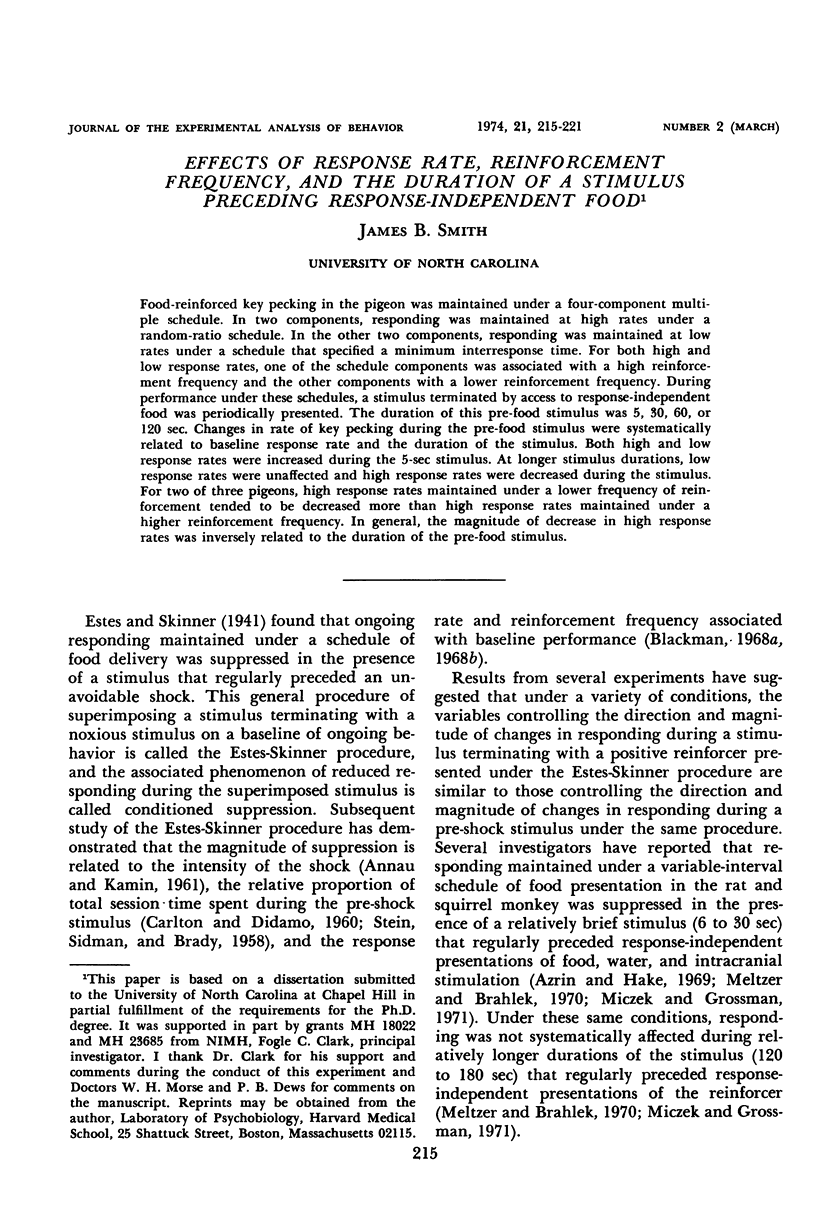
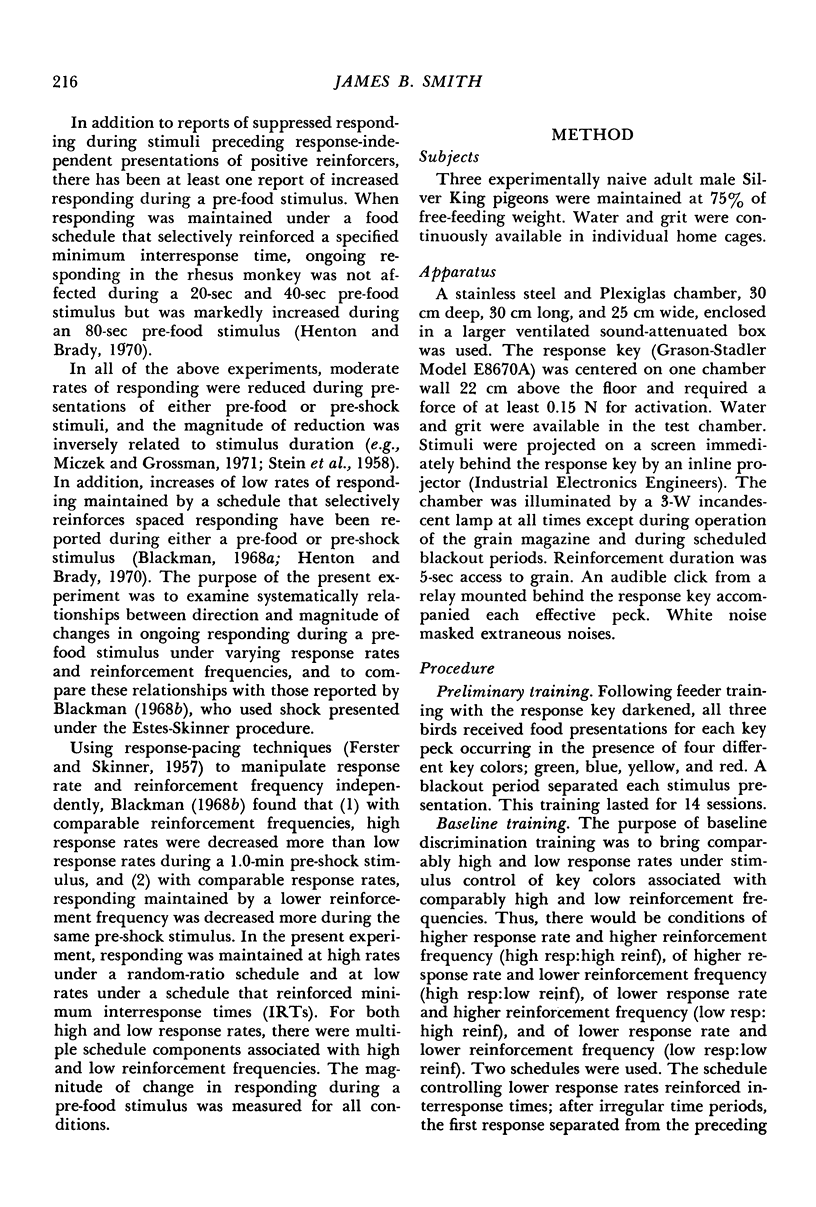
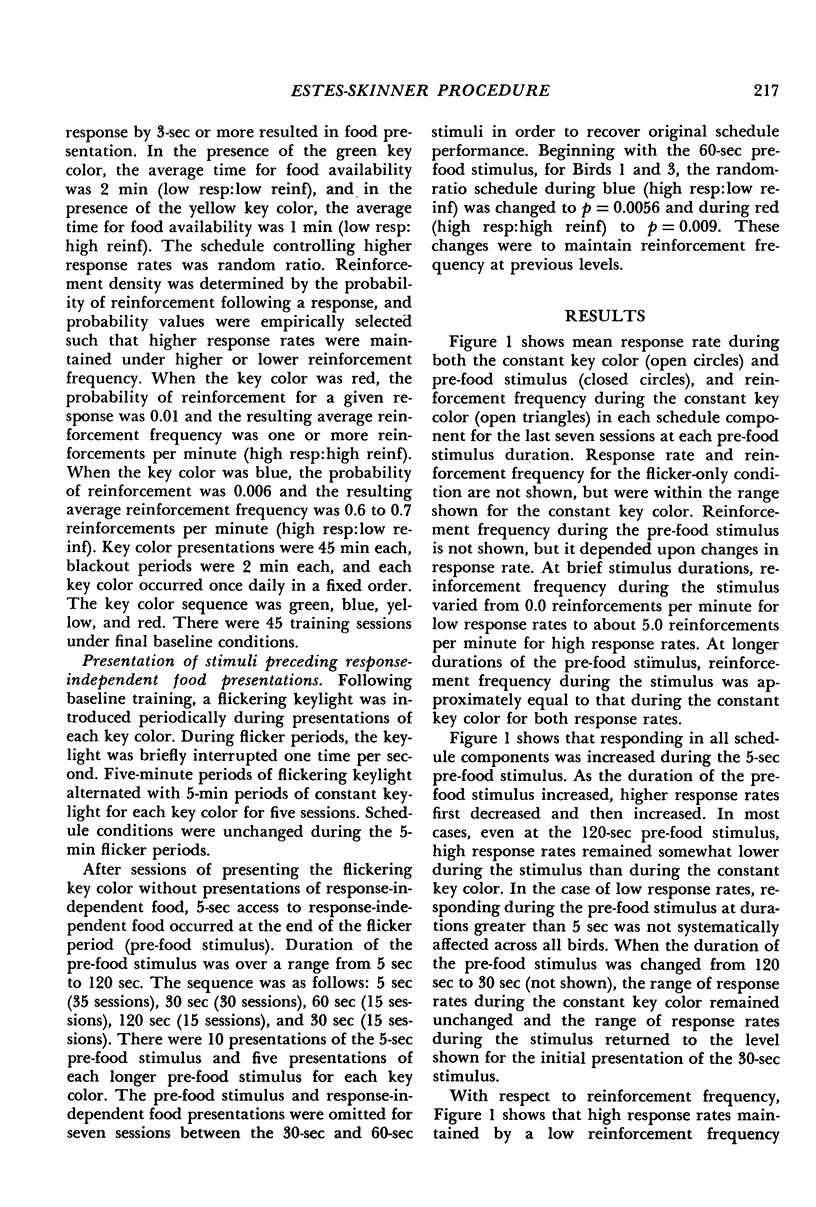
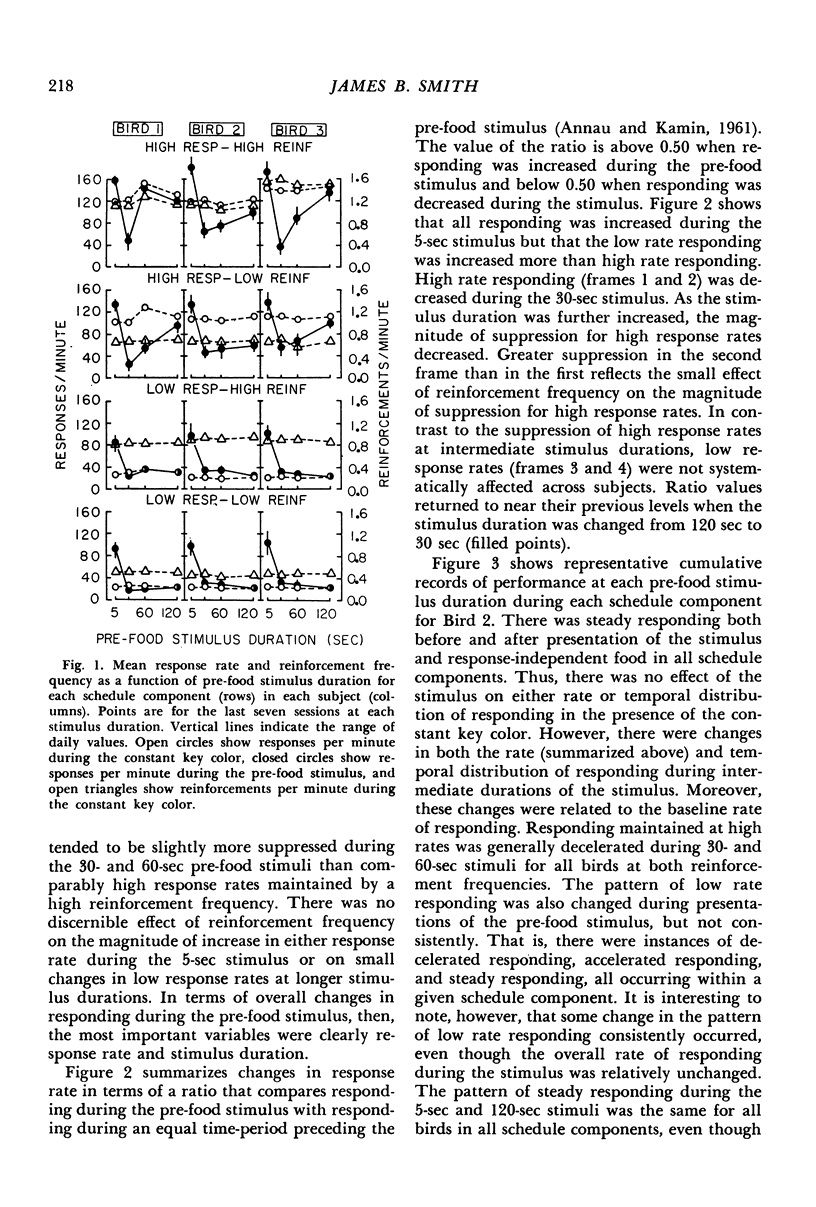
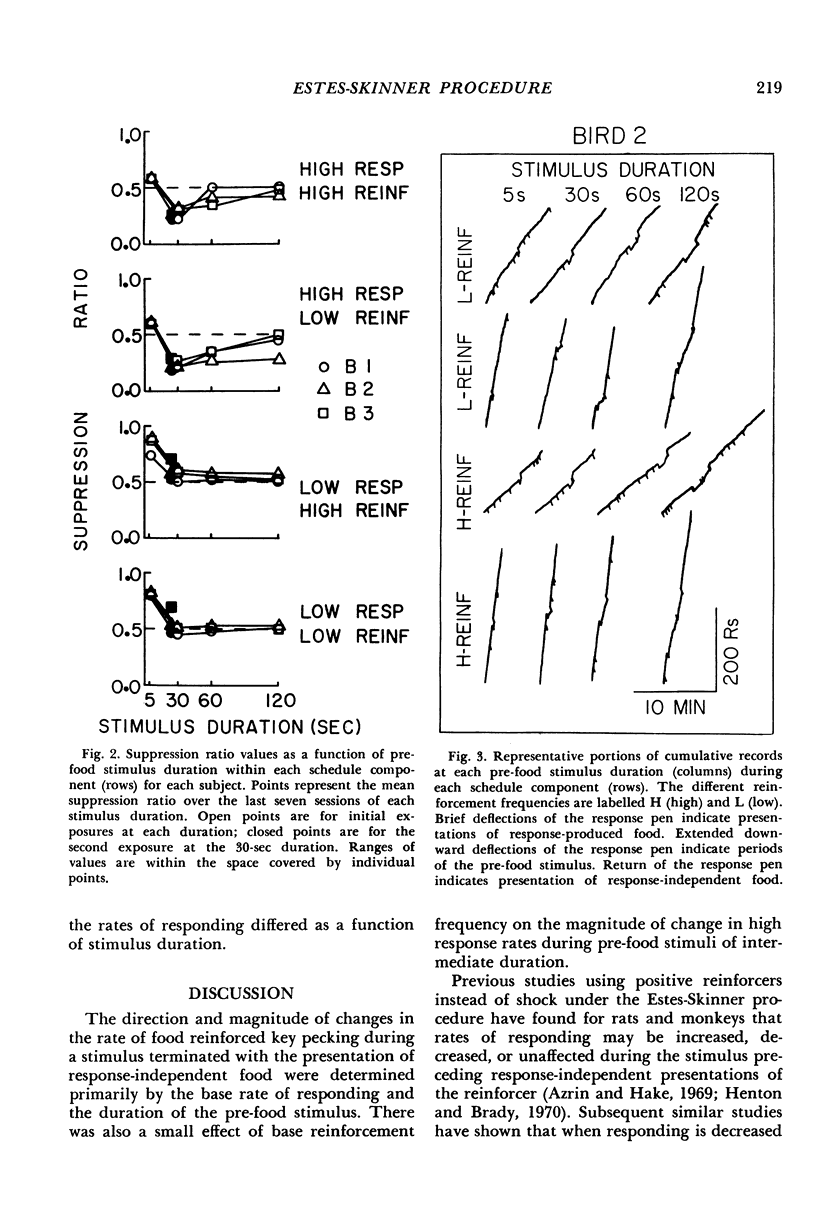
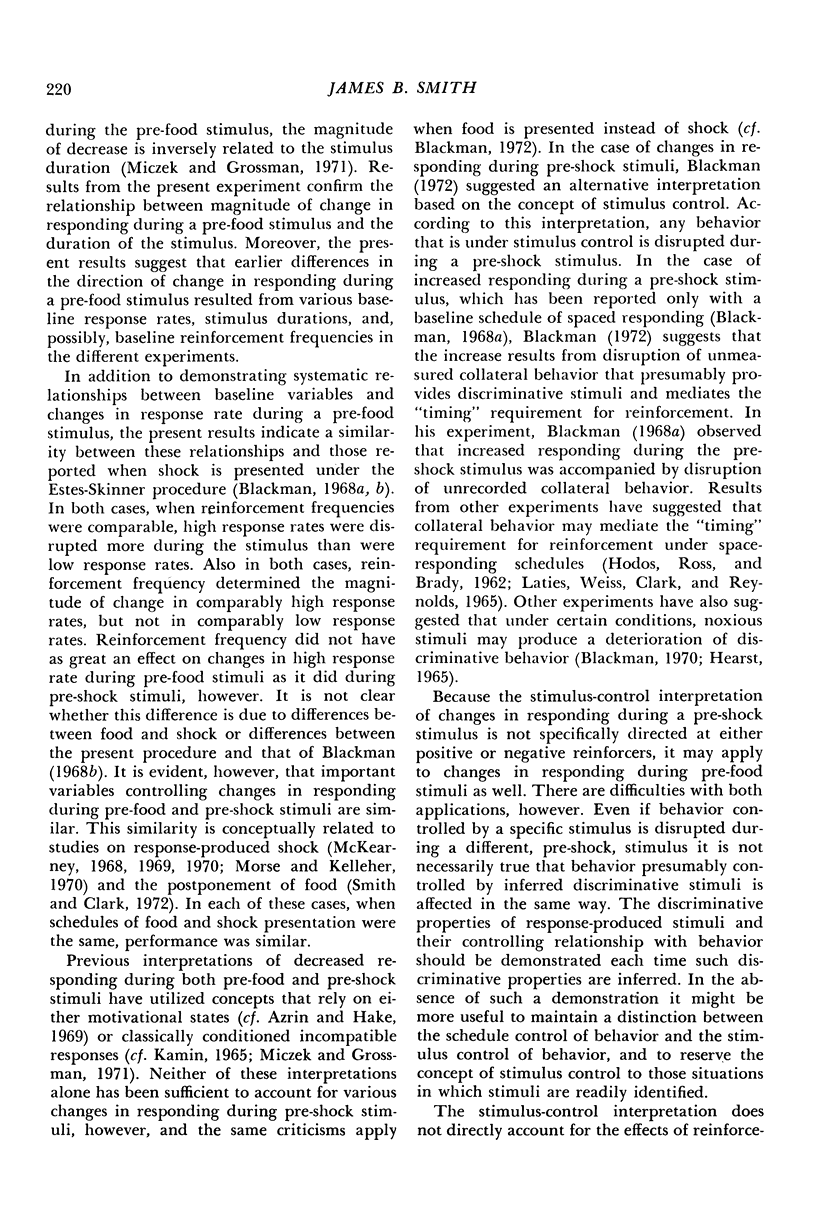
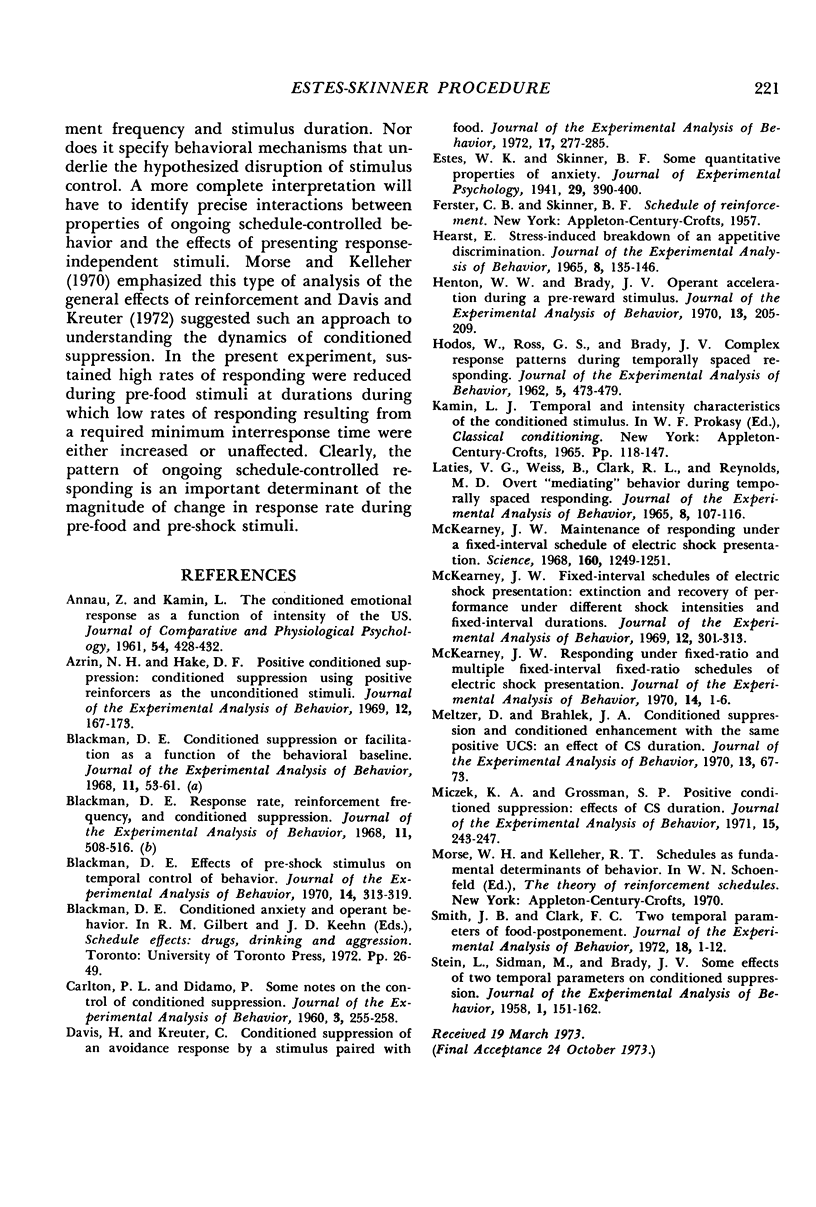
Selected References
These references are in PubMed. This may not be the complete list of references from this article.
- ANNAU Z., KAMIN L. J. The conditioned emotional response as a function of intensity of the US. J Comp Physiol Psychol. 1961 Aug;54:428–432. doi: 10.1037/h0042199. [DOI] [PubMed] [Google Scholar]
- Azrin N. H., Hake D. F. Positive conditioned suppression: conditioned suppression using positive reinforcers as the unconditioned stimuli. J Exp Anal Behav. 1969 Jan;12(1):167–173. doi: 10.1901/jeab.1969.12-167. [DOI] [PMC free article] [PubMed] [Google Scholar]
- Blackman D. Conditioned suppression or facilitation as a function of the behavioral baseline. J Exp Anal Behav. 1968 Jan;11(1):53–61. doi: 10.1901/jeab.1968.11-53. [DOI] [PMC free article] [PubMed] [Google Scholar]
- Blackman D. Effects of a pre-shock stimulus on temporal control of behavior. J Exp Anal Behav. 1970 Nov;14(3):313–319. doi: 10.1901/jeab.1970.14-313. [DOI] [PMC free article] [PubMed] [Google Scholar]
- Blackman D. Response rate, reinforcement frequency, and conditioned suppression. J Exp Anal Behav. 1968 Sep;11(5):503–516. doi: 10.1901/jeab.1968.11-503. [DOI] [PMC free article] [PubMed] [Google Scholar]
- CARLTON P. L., DIDAMO P. Some notes on the control of conditioned suppression. J Exp Anal Behav. 1960 Jul;3:255–258. doi: 10.1901/jeab.1960.3-255. [DOI] [PMC free article] [PubMed] [Google Scholar]
- Davis H., Kreuter C. Conditioned suppression of an avoidance response by a stimulus paired with food. J Exp Anal Behav. 1972 Mar;17(2):277–285. doi: 10.1901/jeab.1972.17-277. [DOI] [PMC free article] [PubMed] [Google Scholar]
- HEARST E. STRESS-INDUCED BREAKDOWN OF AN APPETITIVE DISCRIMINATION. J Exp Anal Behav. 1965 May;8:135–146. doi: 10.1901/jeab.1965.8-135. [DOI] [PMC free article] [PubMed] [Google Scholar]
- HODOS W., ROSS G. S., BRADY J. V. Complex response patterns during temporally spaced responding. J Exp Anal Behav. 1962 Oct;5:473–479. doi: 10.1901/jeab.1962.5-473. [DOI] [PMC free article] [PubMed] [Google Scholar]
- Henton W. W., Brady J. V. Operant acceleration during a pre-reward stimulus. J Exp Anal Behav. 1970 Mar;13(2):205–209. doi: 10.1901/jeab.1970.13-205. [DOI] [PMC free article] [PubMed] [Google Scholar]
- LATIES V. G., WEISS B., CLARK R. L., REYNOLDS M. D. OVERT "MEDIATING" BEHAVIOR DURING TEMPORALLY SPACED RESPONDING. J Exp Anal Behav. 1965 Mar;8:107–116. doi: 10.1901/jeab.1965.8-107. [DOI] [PMC free article] [PubMed] [Google Scholar]
- McKearney J. W. Maintenance of responding under a fixed-interval schedule of electric shock-presentation. Science. 1968 Jun 14;160(3833):1249–1251. doi: 10.1126/science.160.3833.1249. [DOI] [PubMed] [Google Scholar]
- McKearney J. W. Responding under fixed-ratio and multiple fixed-interval fixed-ratio schedules of electric shock presentation. J Exp Anal Behav. 1970 Jul;14(1):1–6. doi: 10.1901/jeab.1970.14-1. [DOI] [PMC free article] [PubMed] [Google Scholar]
- Meltzer D., Brahlek J. A. Conditioned suppression and conditioned enhancement with the same positive UCS: an effect of CS duration. J Exp Anal Behav. 1970 Jan;13(1):67–73. doi: 10.1901/jeab.1970.13-67. [DOI] [PMC free article] [PubMed] [Google Scholar]
- Miczek K. A., Grossman S. P. Positive conditioned suppression: effects of CS duration. J Exp Anal Behav. 1971 Mar;15(2):243–247. doi: 10.1901/jeab.1971.15-243. [DOI] [PMC free article] [PubMed] [Google Scholar]
- Smith J. B., Clark F. C. Two temporal parameters of food postponement. J Exp Anal Behav. 1972 Jul;18(1):1–12. doi: 10.1901/jeab.1972.18-1. [DOI] [PMC free article] [PubMed] [Google Scholar]
- Stein L., Sidman M., Brady J. V. Some effects of Two Temporal Variables on Conditioned Suppression. J Exp Anal Behav. 1958 Apr;1(2):153–162. doi: 10.1901/jeab.1958.1-153. [DOI] [PMC free article] [PubMed] [Google Scholar]


